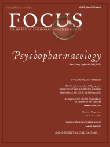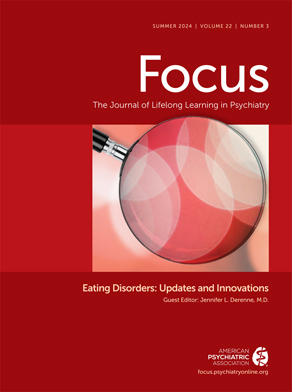In the December Taking Issue commentary Mark Ragins (
1) expressed his concerns about the National Institute of Mental Health’s (NIMH) Clinical Antipsychotic Trials of Intervention Effectiveness (CATIE) study. He is disturbed by “how poorly all the patients had fared,” he complains that the study did not address several important questions, and he concludes that “mental health research must be transformed.” We appreciate Dr. Ragins’ interest in the study and his passion to improve mental health care, but he has misunderstood and misinterpreted the CATIE study’s results.
Dr. Ragins understates the effectiveness of treatment in CATIE. He conflates medication switches (the primary outcome measure) with therapy failure. Although three-quarters of CATIE patients switched from their initial medication assignment, almost two-thirds of them continued to be followed after rerandomization to a new medication, and nearly half of all patients who entered the study finished a full 18 months of follow-up. Dr. Ragins should keep in mind that dropping out of a time-consuming, doubleblind, randomized research trial does not mean dropping out of treatment.
In his commentary Dr. Ragins complained that CATIE did not report on patients’ attitudes toward their physician or their medication, functional outcomes other than symptoms, or the presence or absence of other rehabilitative interventions. It is true that these important variables were not discussed in the
New England Journal of Medicine article (
2), but all of them were assessed and will be reported on in the future. CATIE collected a broad range of information involving three different treatment phases (using more than eight different antipsychotics) that included nearly 1,500 people with schizophrenia who were followed for up to 18 months. This first outcome paper is but an initial installment from a remarkably rich data set.
The lack of difference between the new second-generation antipsychotics and perphenazine surprised Dr. Ragins. It also surprised us. However, such surprises are why double-blind randomized clinical trials like CATIE are needed. The CATIE results suggest that first-generation antipsychotics remain useful and deserve continued consideration by clinicians and patients. This does not mean that older, cheaper antipsychotics can replace more expensive second-generation agents. It is crucial to point out that equivalent does not mean identical: 25 percent of patients may respond to risperidone and 25 percent to perphenazine, but they are not the same 25 percent. These initial results from CATIE speak to the need for treatment options—not restrictions, such as closed formularies or fail-first requirements.
The CATIE results showed that olanzapine, perphenazine, quetiapine, risperidone, and ziprasidone differ from one another somewhat in terms of efficacy and markedly in terms of side effects. The corollary, of course, is that patients differ from one another in how they respond to different antipsychotics. One of CATIE’s most important messages is that pharmacotherapy for schizophrenia must be tailored to individuals, and one of CATIE’s most important achievements will be to provide comparative data that physicians and patients can use to individualize antipsychotic treatment.
CATIE is not the last word in the treatment of schizophrenia, nor is it the end of NIMH’s commitment to effectiveness research relevant to clinicians and people with mental illnesses. CATIE is the first objective comparison of multiple antipsychotic drugs carried out with patients in settings that are representative of realworld treatment settings for people with schizophrenia. It is a step toward NIMH’s goal of improving the lives of people with schizophrenia and toward Dr. Ragins’ “vision of a transformed mental health system.”

